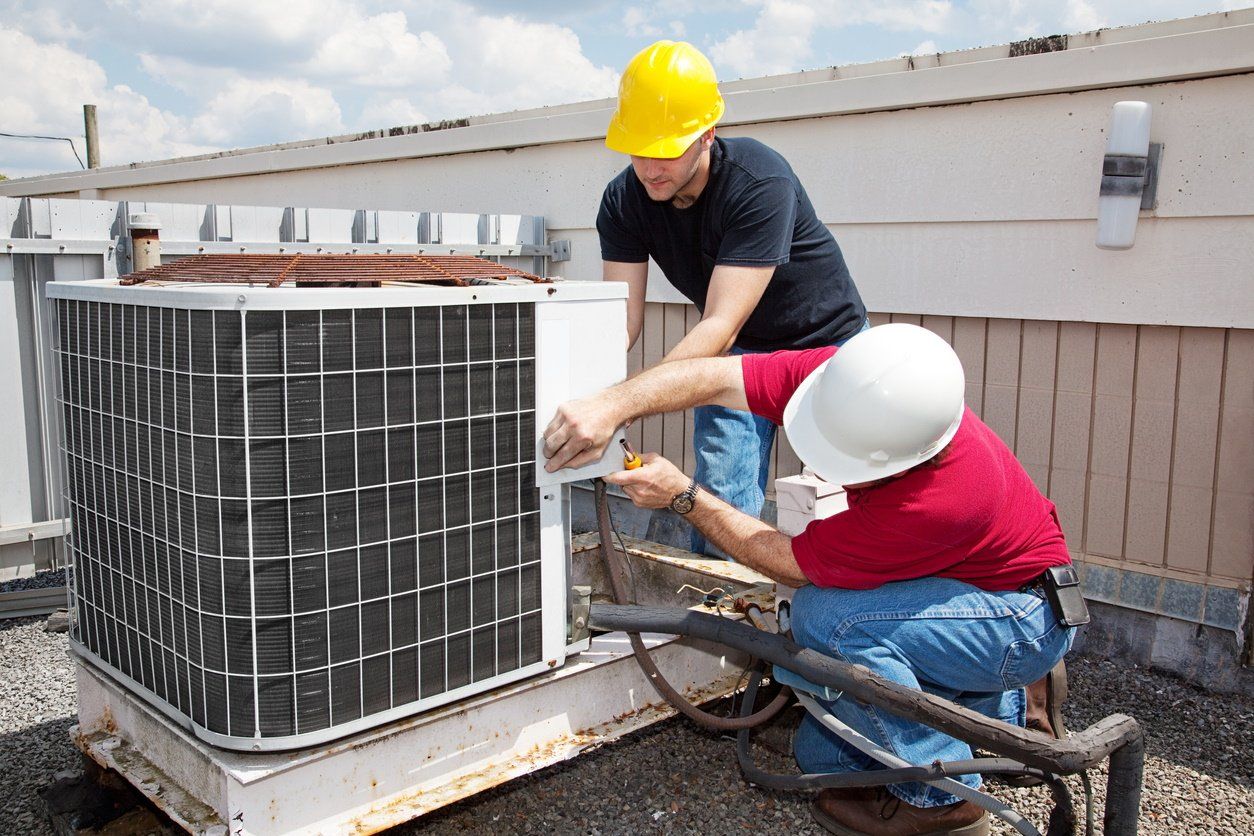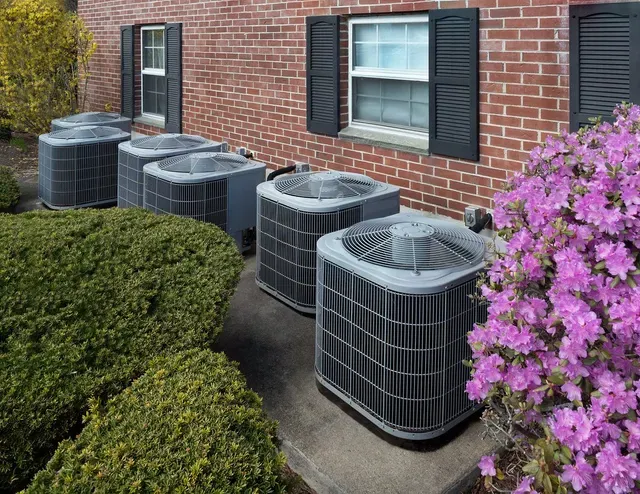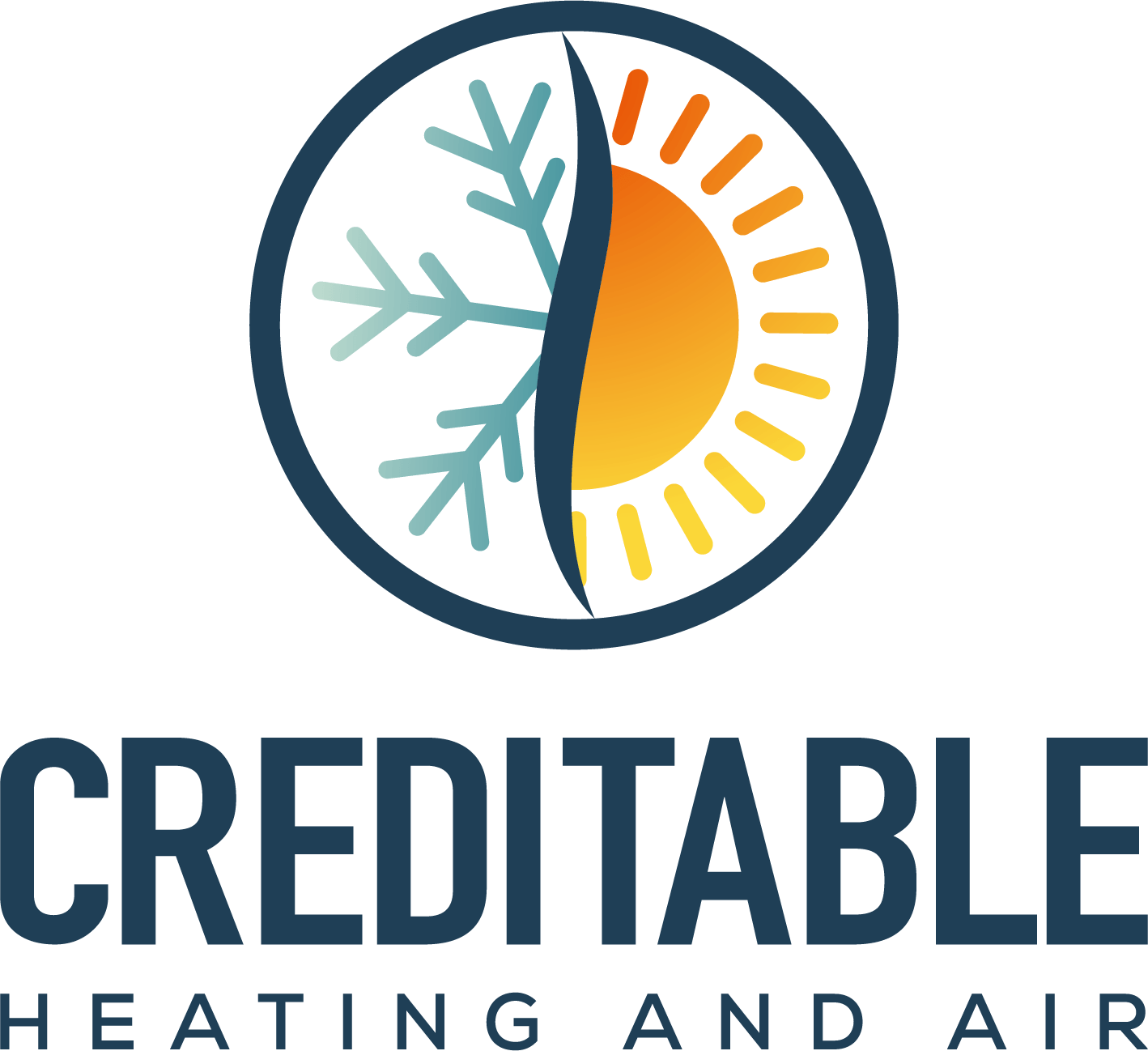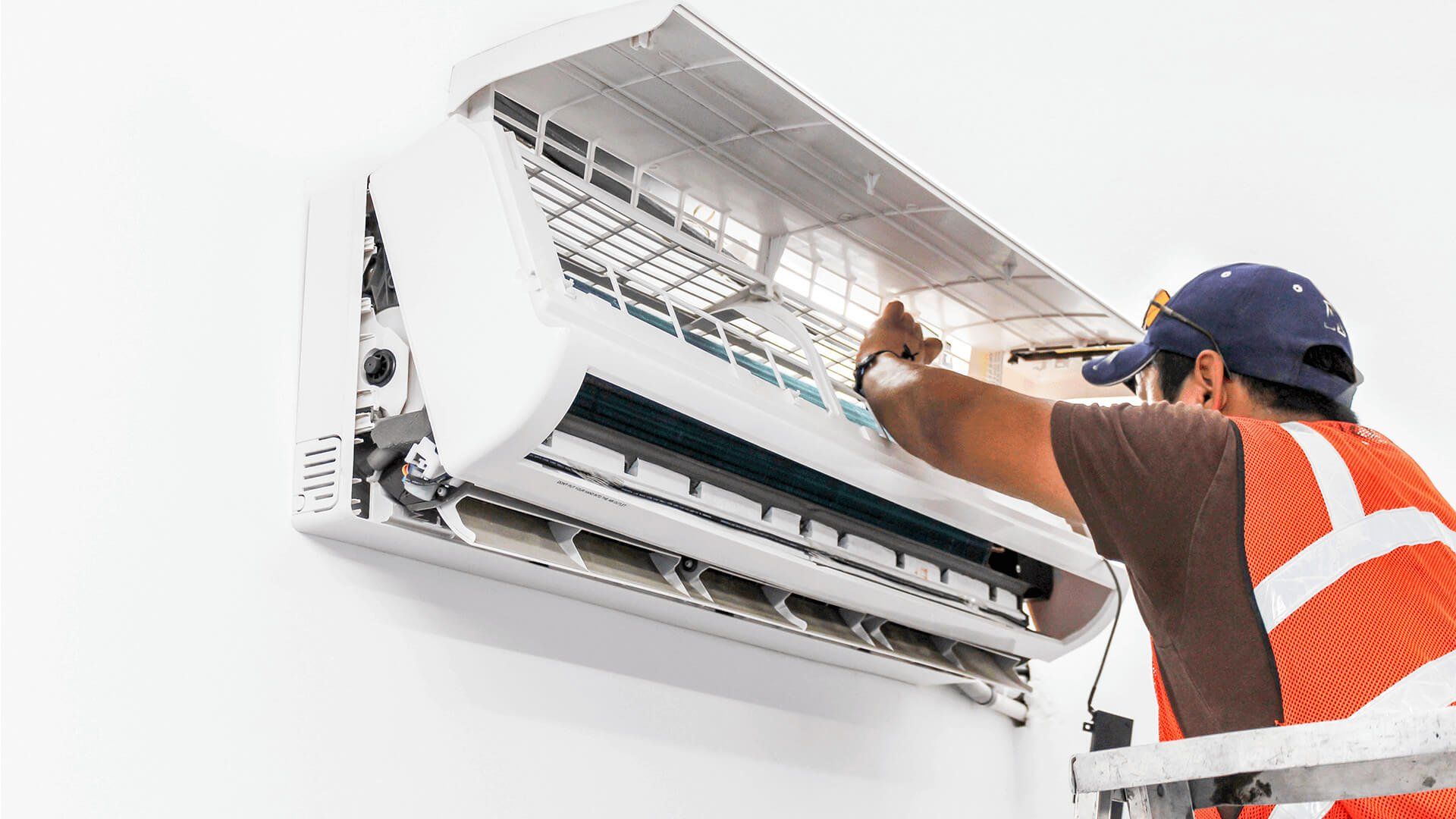A Beginner’s Guide to Air Conditioning
A Beginner’s Guide to Air Conditioning
We all know that air conditioning is a must during the summer months. But what is air conditioning, exactly? And how does it work?
In this blog post, we will answer these questions and provide a beginner’s guide to air conditioning.
We will discuss the different types of air conditioners, how they work, and the benefits of using air conditioning. Keep reading to learn more!
What is Air Conditioning?
An air conditioner is a system that is used to cool and dehumidify the air in a space. It can be used in both residential and commercial settings.
Air conditioning is the process of removing heat from a space and transferring it to another space according to the refrigeration cycle. The most common type of air conditioner uses refrigerants to remove heat from the air in a room and release it outdoors.
Refrigerants are chemical compounds that easily change from a gas to a liquid and back again. In an air conditioner, the refrigerant circulates between two coils: an indoor coil and an outdoor coil. The indoor coil is located inside the unit near the evaporator, and the outdoor coil is attached to the condenser.
When the AC is turned on, the refrigerant absorbs heated air from inside your home and turns into a liquid. It then travels outside, where it releases that heat into the environment and turns back into a gas. This process is repeated over and over again until the desired temperature is reached.
The Benefits of Air Conditioning Systems
There are many benefits of using air conditioning systems, especially during the summer months.
Some of the benefits include:
- Improved air quality
- Reduced allergens
- Cooler temperatures
- Reduced humidity
Improved Air Quality
One of the benefits of air conditioning is improved air quality. Air conditioners remove pollutants and contaminants from the air, leaving you with clean, fresh air to breathe.
According to the Environmental Protection Agency (EPA), “Indoor air can be up to five times more polluted than outside air.” This is because pollutants can build up inside a home or office, especially if it is not well-ventilated.
Air conditioners filter out these pollutants, improving the air quality in your space. This is especially beneficial for people with allergies or asthma.
Reduced Allergens
Air conditioners filter out dust, pollen, pet dander, and other allergens that can cause respiratory problems. This can lead to a reduction in allergies and asthma symptoms.
For people with allergies, air conditioning can be a lifesaver. It can provide relief from the symptoms that can make everyday life difficult.
Cooler Temperatures
Air conditioners lower the temperature of a room, creating a cooler, more comfortable environment. This is especially beneficial during hot summer days.
A cooling system can also help prevent heat-related illnesses like heat stroke. When the temperature is cooler, the body does not have to work hard to regulate its internal temperature.
Reduced Humidity
Air conditioners also reduce humidity levels in a space. High humidity and warm air can be uncomfortable and lead to mold and mildew growth.
Air conditioners remove moisture from the air, creating a drier, more comfortable environment. This can also help prevent musty odors from developing.
Improved Sleep
Another benefit of the air conditioning system is improved sleep. When the temperature is cooler, it is easier to fall asleep and stay asleep.
Cooler temperatures also help reduce tossing and turning during the night. This can lead to a more restful night’s sleep and improved overall health.
Lower Stress Levels
Cooler temperatures can also help reduce stress levels. When the body is cooler, it is more relaxed. This can lead to lower blood pressure and a reduction in anxiety.
With cold air, air conditioners can create a calm, comfortable environment that can help you relax and de-stress.
Increased productivity
Cool air and decreased air temperature can also lead to increased productivity. When the body is comfortable, it can focus on tasks more easily.
This is especially beneficial in work environments. A study by the International Labor Organization found that “ thermal comfort has a significant impact on workers’ cognitive function and task performance.”
This is a subtitle for your new post

Main Components of an Air Conditioning System
An air conditioning system has three main components:
- Condenser
- Evaporator
- Compressor
Condenser
The condenser is located outside the unit and helps to release heat into the environment. It is usually made of metal and has a condenser coil that helps to cool the air.
Evaporator
The evaporator is located inside the unit and helps to absorb heat from the air. It is usually made of coils that are filled with refrigerant.
Compressor
The compressor is located inside the unit and helps to circulate refrigerant throughout the system. It is usually made of metal and has a motor that helps to cool the air.
What Is a SEER Rating?
The Seasonal Energy Efficiency Ratio (SEER) is a rating that measures the efficiency of an air conditioning system. The higher the SEER rating, the more efficient the system is.
Simply put, the SEER rating measures how much energy an air conditioner uses to cool a space.
For beginners, a SEER rating of 13 is a good place to start. This is the minimum efficiency rating required by the U.S. Department of Energy.
Types of Air Conditioners
There are six main types of air conditioners:
Central Air Conditioners
Central air conditioning systems are the most common type of air conditioning unit. They are usually installed in homes and businesses.
They consist of an outdoor unit that contains the condenser and compressor and an indoor unit that contains the evaporator. Its cooling ability and air flow makes it a good choice for large spaces and industrial air conditioning.
Installing a central air conditioning system can be expensive and requires a professional. The unit and installation costs can range from $3000 to $10000.
Ductless Mini-Split Air Conditioners
Split systems are similar to central air conditioners but do not require ductwork.
They consist of an outdoor unit that contains the condenser and compressor and an indoor unit that contains the evaporator. They can be a good choice for homes and businesses that do not have ductwork or for people who want to cool a specific area.
You'll need multiple indoor units to cool multiple rooms as it doesn't have duct system
Ductless mini-split air conditioners are more expensive than central air conditioners but are less expensive to install. The unit and installation costs can range from $2000 to $8000.
Window Air Conditioners
Window air conditioners are the most common type of air conditioner for small spaces. They are usually installed in windows or walls.
They consist of an outdoor unit that contains the condenser and compressor and an indoor unit that contains the evaporator. Its compact size makes it a good choice for small spaces.
A window air conditioner is less expensive than other types of air conditioners but can be more expensive to install. The unit and installation costs can range from $500 to $2000.
Portable Air Conditioners
Portable air conditioners are small, self-contained units that can be moved from one room to another. They usually have wheels and handles for easy transport.
Portable air conditioners usually have one hose that vents hot air outside and another hose that brings fresh air into the unit. They can be a good choice for people who want to cool a specific area (enclosed space) or who do not want to install a permanent air conditioning system.
Portable air conditioners are less expensive than other types of air conditioners but can be more expensive to operate. The unit and installation costs can range from $500 to $2000.
Geothermal Heaters and Coolers
Geothermal heaters and coolers are air conditioners that use the earth’s natural heat to provide heating and cooling. They are usually installed in homes and businesses.
They consist of an outdoor unit that contains the condenser and compressor and an indoor unit that contains the evaporator. Its efficient design makes it a good choice for people who want to save money on their energy bills.
Geothermal heaters and coolers are more expensive than other types of air conditioners but can save you money for many years. The unit and installation costs can range from $5000 to $15000.
Hybrid Air Conditioners
Hybrid air conditioners are a type of air conditioner that uses both electric and gas power to operate. They are usually installed in homes and businesses.
They consist of an outdoor unit that contains the condenser and compressor and an indoor unit that contains the evaporator. Its design makes it a good choice for people who want to save money on their energy bills.
Hybrid air conditioners are more expensive than other types of air conditioners but can save you money in the long run. The unit and installation costs can range from $3000 to $10000.
Buying an Air Conditioner
When buying an air conditioner, you should consider the size of the unit, the type of unit, and the cost of the unit. You should also consider the cost of installation and the cost of operating the unit.
Size
The size of the air conditioner is important because it determines how much cooling capacity the unit has. The cooling capacity is measured in BTUs (British Thermal Units). The larger the unit, the more cooling capacity it has.
Type
The type of air conditioning units you buy will determine how much it costs to operate and how difficult it is to install. Central air conditioners are the most expensive to operate but are the easiest to install. Portable air conditioners are the least expensive to operate but can be more difficult to install.
Cost
The cost of the air conditioner is important because it determines how much you will have to spend to purchase and install the unit. Central air conditioners are the most expensive type of air conditioner but are less expensive to operate. Portable air conditioners are the least expensive type of air conditioner but can be more expensive to operate.
Installation
The cost of installation is important because it determines how much you will have to spend to install the unit. Central air conditioners are the most expensive type of air conditioner to install but are the easiest to install. Portable air conditioners are the least expensive type of air conditioner to install but can be more difficult to install.
Operating Cost
The cost of operating the air conditioner is important because it determines how much you will have to spend to operate the unit. Some air conditioners are more expensive to operate than others.
7 Tips to Maintain Your Air Conditioner
Here are some tips to help you maintain your air conditioner:
- Change the filter regularly.
- Clean the coils and fins.
- Keep the area around the air conditioner clean and free of debris.
- Keep the air conditioner in a shaded area.
- Check for leaks and repair them promptly.
- Have the air conditioner serviced regularly.
- Follow the manufacturer’s instructions for operating the unit.
By following these tips, you can help ensure that your air conditioner will last for many years.
Conclusion
Air conditioners are a necessary part of life in many parts of the world. They can be expensive to purchase and operate but can save you money in the long run. Following some simple tips can help ensure that your air conditioner will last for many years.
GET A FREE AIR CONDITIONING QUOTE, REACH OUT TODAY!
OUR SERVICE AREAS IN BALDWIN COUNTY, AL
Creditable Heating and Air provides quality air conditioning repair and HVAC services across the broader Baldwin County area, including but not limited to:
If you'd like a complimentary quote or inspection, or have questions, reach out today using our form or giving us a call!








